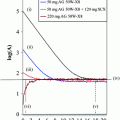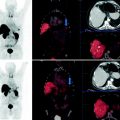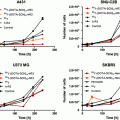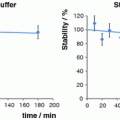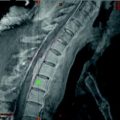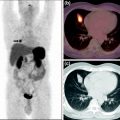in 3–5 cycles, 4–8 interval
Fixed doses
3–4 × 2.96 GBq each 6–8 weeks
4 × 3.7 GBq each 6–8 weeks
4 × 2.96 GBq 90Y–DOTATATE every 12 weeks + 3.7 GBq 177Lu–DOTATATE after 6 weeks
For 177Lu–DOTATATE, 3–5× 7.4 GBq each 8–12 weeks
The injected activity per one course was 2.2–7.4 GBq.
For tandem therapy with 90Y/177Lu–DOTATATE, two protocols were used:
50% activity of 90Y–DOTATATE and 50% activity of 177Lu–DOTATATE (1.85 GBq 90Y + 1.85 GBq 177Lu)
75% activity of 177Lu–DOTATATE and 25% activity of 90Y–DOTATATE (1.85 GBq 90Y + 5.55 GBq 177Lu)
For patients with gliomas, 90Y–DOTATATE was directly injected into a port-a-cath, the capsule of which had been permanently implanted into postsurgical cavity by stereotactic navigation. The radioactivity of 90Y–DOTATATE was 1.1 GBq per injection, with a 4–6-week interval.
2.3 Evaluation of Results and Assessment of Clinical Benefit
Disease staging and treatment response in patients with NET were evaluated on 12-month follow-up (except at Department of Nuclear Medicine and Endocrine Oncology, Gliwice Branch, where they performed response 6–8 weeks after treatment completion). Response of treatment on CT was defined according to Response Evaluation Criteria in Solid Tumors (RECIST) criteria. Side-effects were scored according to WHO criteria.
Progression-free survival/time to progression (PFS/TTP) and overall survival (OS) were calculated by Kaplan–Meier estimation and used for treatment response.
Treatment response in patients with gliomas was defined according to RECIST criteria. MRI was performed 7, 21, and 30 days after 90Y–DOTATATE injection. Side effects were scored according to WHO criteria.
3 Results
Considering the number of treated patients, we included the results of therapy in patients with NET from five departments (n = 233) in the analysis (Kunikowska et al. 2011; Cwikla et al. 2010).
The majority of patients underwent 90Y–DOTATATE therapy (n = 177) with PFS/TTP of 17–37 months and OS of 22–34.2 months.
The observed results were as follows:
Nuclear Medicine Department Warsaw Medical University
n = 18 patients; PFS/TTP 27.8 months; OS 34.2 months
Chair and Department of Endocrinology and Nuclear Medicine, Jagiellonian University Collegium Medicum, Cracow
n = 39 patients; PFS/TTP 37.6 months; OS not reached
Nuclear Medicine Department, Military Institute of Medicine
n = 25 patients; PFS/TTP 22 months; OS 24.5 months
Department of Radiology and Diagnostic Imaging, Medical Centre for Postgraduate Education and Central Clinical Hospital of Ministry of Internal Affairs and Administration, Warsaw
n = 57 patients; PFS/TTP 17 months; OS 22 months
Department of Nuclear Medicine and Endocrine Oncology, Maria Skłodowska-Curie Memorial Cancer Center, Institute of Oncology, Gliwice Branch, Gliwice,
n = 35 patients; PFS/TTP 44 months; OS not reached
Among these patients, 12-month follow-up revealed stable disease (SD) in 47–60%, disease regression (RD) in 16–35%, and disease progression (PD) in 4–10%; 10–18% of patients died.
Detailed response after 1 year is listed in Table 1.
Table 1
WHO response to treatment in 12-month follow-up after 90Y–DOTATATE
12-Month follow-up | Nuclear Medicine Department Warsaw Medical University, n = 18 (%) | Chair and Department of Endocrinology and Nuclear Medicine, Jagiellonian University, n = 39 patients (%) | Nuclear Medicine Department, Military Institute of Medicine n = 25 patients (%) | Central Hospital of Ministry of Internal Affairs and Administration, n = 60 patients (%) |
|---|---|---|---|---|
Regression (RD) | 16 | 31 | 20 | 35 |
Stable (SD) | 57 | 47 | 60 | 56 |
Progression (PD) | 10 | 4 | 10 | 9 |
Death | 17 | 18 | 10 |
Only at the Department of Nuclear Medicine and Endocrine Oncology, Gliwice Branch was the response evaluated 6–8 weeks after completed therapy, with the following results: complete remission (CR) in 3%, SD in 60%, RD in 20%, and disease progression in 17%.
In patients treated with 90Y/177Lu–DOTATATE (n = 44), PFS/TTP was 24.2–28.3 months and OS was 49.8–52.8 months. Twelve-month follow-up revealed SD in 62–70% of patients, RD in 15–20% of patients, and PD in 10–12% of patients.
Only 12 patients were treated with 177Lu–DOTATATE with the following results: PFS/TTP of 25.2 months and OS of 42.1 months. Twelve-month follow-up revealed SD in 50% of patients, RD in 25% of patients, and PD in 25% of patients.
In the group treated with sequential treatment (4× 90Y–DOTATATE and one dose of 90Y/177Lu–DOTATATE) the data are not available.
Results of treatment of patients with gliomas are being developed.
3.1 Side-Effects of Treatment
The treatment was well tolerated. No severe adverse events occurred.
Nausea and vomiting during administration of treatment and amino acids were observed in 15–40%. All cases of nausea and vomiting were successfully treated with ondansetron.
Mild pain (no treatment required) at the site of the tumor was observed in 12–16% within the first 48–72 h post treatment.
According to WHO hematological toxicity criteria, grade 3 toxicity (in WBC and PLT) during therapy was seen in 6–20% of patients treated with 90Y–DOTATATE, but on 12-month follow-up in only 3–8% of patients. In patients treated with tandem therapy with 90Y/177Lu–DOTATATE or 177Lu–DOTATATE alone, toxicity grade 3 or 4 was not seen.
WBC and PLT decrease after therapy was only measured by blood test without clinical symptoms. Hematological toxicity was seen mainly in patients who received chemotherapy before PRRT.
Hemoglobin level showed grade 3 toxicity in only 5–8% of patients treated with 90Y–DOTATATE; in the others, toxicity of this parameter was mild (grade 1 or 2).
According to renal toxicity as defined by the National Cancer Institute, in patients treated with 90Y–DOTATATE renal toxicity grade 3 was seen in 5–12% and grade 4 in 3–8%. In patients treated with tandem therapy with 90Y/177Lu–DOTATATE or 177Lu–DOTATATE alone, toxicity grade 3 or 4 was not seen. Mean glomerular filtration rate (GFR) decrease was 6.1–7.2 mL/min per year in patients treated with 90Y–DOTATATE, 2.7–3.4 mL/min per year in patients treated with 90Y/177Lu–DOTATATE, and 1.7 ml/min per year in patients treated with 177Lu–DOTATATE.
Detailed renal and hematological grade 3 and 4 toxicities are listed in Table 2.
Table 2
Hematological and renal grade 3 and 4 toxicities after 90Y–DOTATATE
12-Month follow-up | Nuclear Medicine Department Warsaw Medical University, n = 18 | Chair and Department of Endocrinology and Nuclear Medicine, Jagiellonian University n = 39 patients | Nuclear Medicine Department, Military Institute of Medicine, n = 25 patients
Stay updated, free articles. Join our Telegram channel
Full access? Get Clinical Tree
 Get Clinical Tree app for offline access
Get Clinical Tree app for offline access

|
|---|
